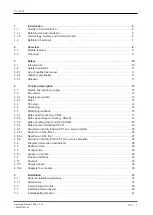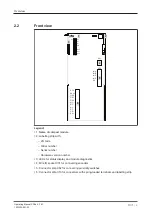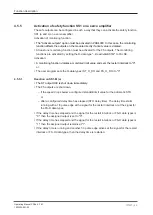
Function description
Operating Manual PSSu K F EI
1003303-EN-03
| 14
4.2.2
Notes
WARNING!
When wiring an output with capacitance it is essential to note the pulse dur-
ation, repetition period and scan time of the power-up test, otherwise the
load may switch on unintentionally.
}
For applications in accordance with Category 4, PL e and SIL 3, detection of shorts
between contacts must be guaranteed either via the on/off test or through other meas-
ures (e.g. asynchronous switching). A short between contacts must be simulated during
commissioning.
4.3
ST output
}
1 ST output
Signals at the output
}
"0" signal (0 V) at the output:
– Output is high impedance
– No current to the load
}
"1" signal (+24 V) at the output:
– Output is low impedance
– Current is supplied to the load
4.4
Cascading
Cascading can be used to network several modules. A combined standard input/output CIO
is used for cascading. If one of the networked modules triggers a monitoring function, then
all networked modules are switched off. To ensure that more than one axis can be stopped
via cascading when a monitoring function reacts, the following measures are necessary:
}
Connect the CIO terminals of all modules, whose axes are to be stopped at the same
time. Make sure that the modules are connected to a common 0 V periphery supply.
}
Activate the cascading input (terminal CIO) in the module's hardware configuration
(PAS4000) if the module is to be switched off by another module via the cascading output
CIO (repeat for other axes if applicable).
}
Activate the cascading output (terminal CIO) with
ActivateCascading
= TRUE for all the
modules connected via the terminals CIO.
NOTICE
All networked modules must be connected to a common 0 V periphery sup-
ply.















































